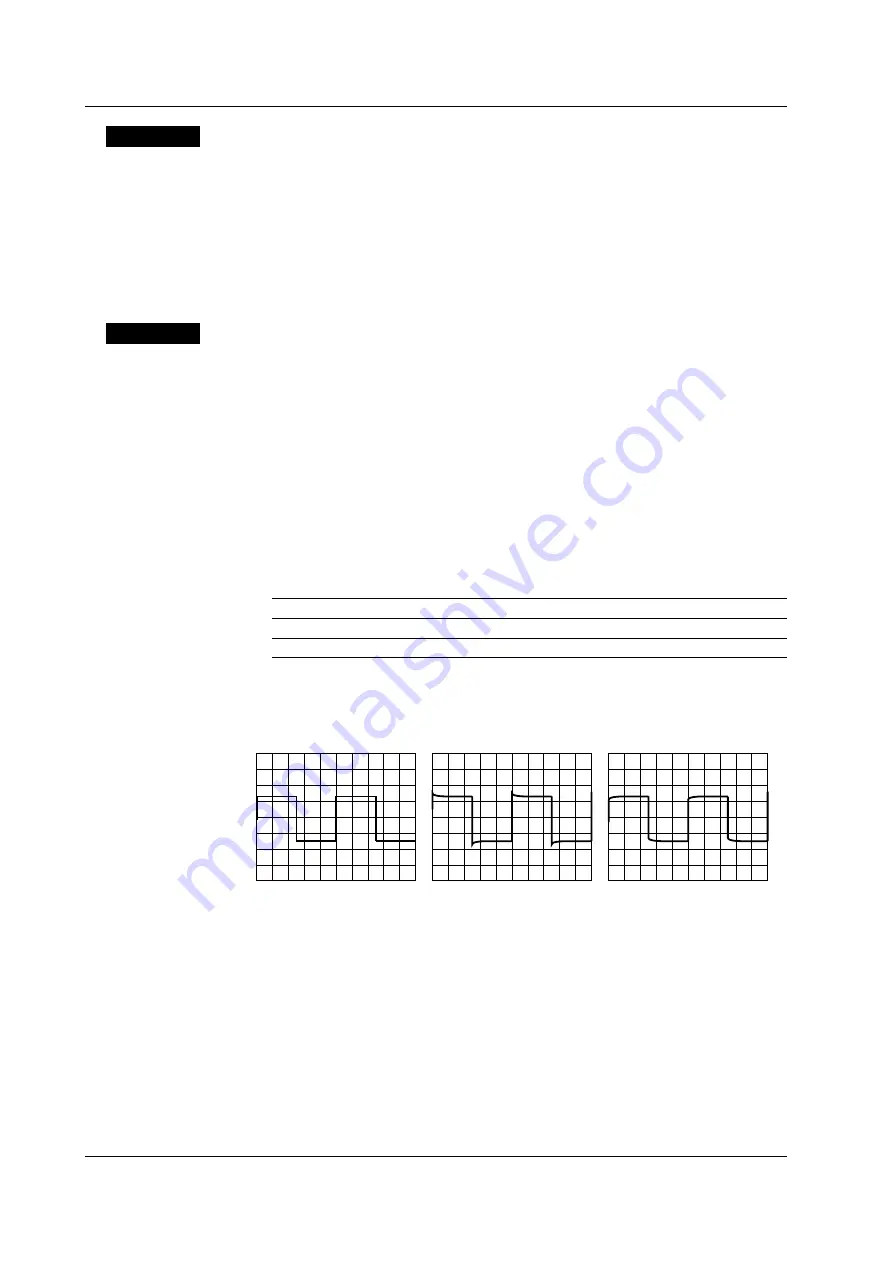
3-10
IM 704420-01E
Procedure
1.
Turn ON the TA120E and DL1540.
2.
Turn OFF the equalizer of the TA120E (see section 4.2).
3.
Set the waveform acquisition conditions of the DL1540 so that approximately
two periods of the waveform can be viewed in its entirety. For the procedure,
see the DL1540 User’s Manual.
4.
Insert a flat-head screwdriver to the phase correction hole of the probe and turn
the variable capacitor to make the displayed waveform on the waveform monitor
a correct rectangular wave (see explanation).
Explanation
The necessity of phase correction of the probe
If the input capacity of the probe is not within the adequate range, the gain across
different frequencies will not be uniform. Consequently, a correct waveform cannot be
input to the measurement circuit of the TA120E. The input capacity of each probe is
not necessarily all the same. Therefore, the probe has a variable capacitor (trimmer)
that allows the input capacity to be adjusted. This adjustment is called phase
correction.
When using the probe for the first time, make sure to perform phase correction. The
appropriate input capacity varies depending on the input connector of the instrument.
Therefore, phase correction must also be performed when the connected instrument
is changed.
Compensation signal
Waveform type
Rectangular wave
Frequency
Approx. 1 kHz
Voltage
Approx. 1 V
P-P
Differences in the waveform due to the phase correction of the probe
Correct waveform
Over compensated
(the gain in the high
frequency region is up)
Under compensated
(the gain in the high
frequency region is low)
3.6 Phase Correcting the Probe






























